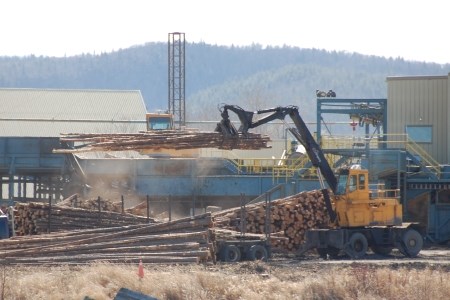When Northern Development, Mines and Forestry Minister Michael Gravelle said he wanted to put Ontario’s wood back to work, nobody disagreed with him.
Breathing new life into the near-dead forestry industry has turned into a two-pronged effort by Queen’s Park with a wood supply competition to free up 11 million cubic metres of unused fibre, and even more ambitious plans to totally overhaul the forest tenure system.
After two rounds of public consultation this past summer, what’s followed is confusion on the ground and uncertainty by many forestry players on what this new system will look like and who stands to benefit.
There were more than 100 value-added projects submitted by companies and forestry-dependent communities seeking access to Crown fibre to return prosperity and jobs to the North. The government’s timelines to roll out the winners of wood competition has been absolutely glacial, leaving many wondering how much longer Ontario’s wood can be left in limbo.
Daryl Skworchinski, Marathon’s economic development officer, feels the province is on the right track, but has real concerns how these two processes fit together.
He’s not a fan of why the tenure reform process is a public one, and the wood competition is a very secretive one.
Marathon is joint-venturing with Manitouwadge and Pic River First Nation to try and gain access to 360,000 cubic metres in the Big Pic forest management unit. Those who applied last spring for the wood supply competition were told to keep quiet.
“If it wasn’t for the proponents who submitted business plans in that competition contacting us, we wouldn’t have known who submitted for wood on the Big Pic,” said Skworchinski.
Marathon has a shuttered pulp mill with a commercial dock on Lake Superior that it wants to find a new owner for. Two proponents have set foot on the property, including a California fertilizer maker that wants the site to convert biomass into aviation fuel.
But the burning question for Skworchinski is, “what if (the province) chooses a company for the Big Pic that isn’t a good fit for what the community envisions as its economic development path going forward?”
So far, he’s received no responses from MNDMF officials in charge of the competition.
“We would like to know the shortlist for the Big Pic and be able to provide input.”
Gravelle wants to eliminate the confusion with an announcement this winter on the winners of the wood competition. He’d hoped to have answers within six months of his Nov. 26, 2009 announcement but the ministry has been swamped with 115 applicants.
“It’s very, very complicated and needs to be done in a very fair manner.”
Gravelle said the wood supply is a short-term opportunity to put unused wood back in circulation for existing or new forestry players.
“The bottom line is we want to see a situation where Ontario’s wood is not sitting in the forest not being harvested because the people who have control of it have chosen not to use it.”
Forest tenure reform is a longer process with government plans to launch two pilot models, known as Local Forest Management Corporations (LFMC), to better manage Crown forests and oversee the competitive sale of Crown timber. The models will test some new principles of allocation, licensing and the pricing of wood over a five-to-seven-year period.
“It’s important that we put them in locations where the opportunity to make them work is there.”
Gravelle admits the LFMCs are controversial, particularly since industry reps would be excluded from sitting on the LFMC boards, but the government’s biggest motivation in moving forward with reform is to stop companies from hoarding wood.
For the Ontario Forest Industries Association, what’s lost in the discussion is the government’s implementation of the Endangered Species Act, what president Jamie Lim regards as the industry’s “biggest threat.”
Her group expects almost 9 million cubic metres of the 26 million cubic metres in Ontario’s wood basket will be lost to industry along with 3,200 jobs.
“If the pie keeps shrinking, I don’t think people will be happy with whatever tenure system you bring in,” said Lim.
She calls the LFMC concept a “massive experiment” that threatens to take back all the wood supply fibre commitments.




